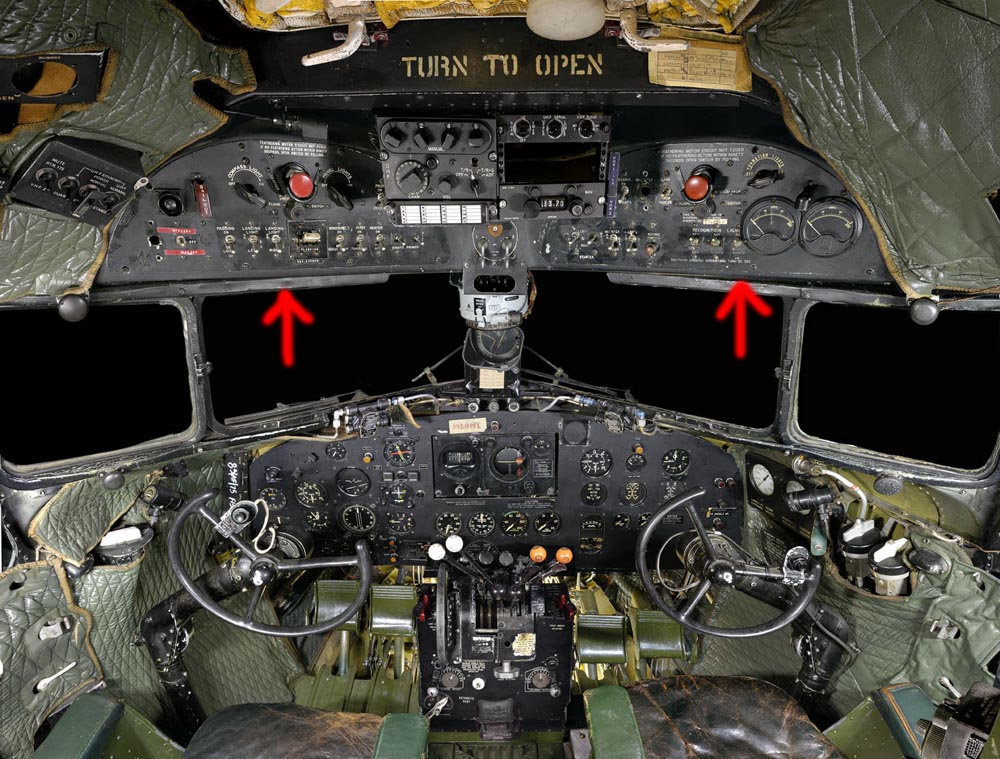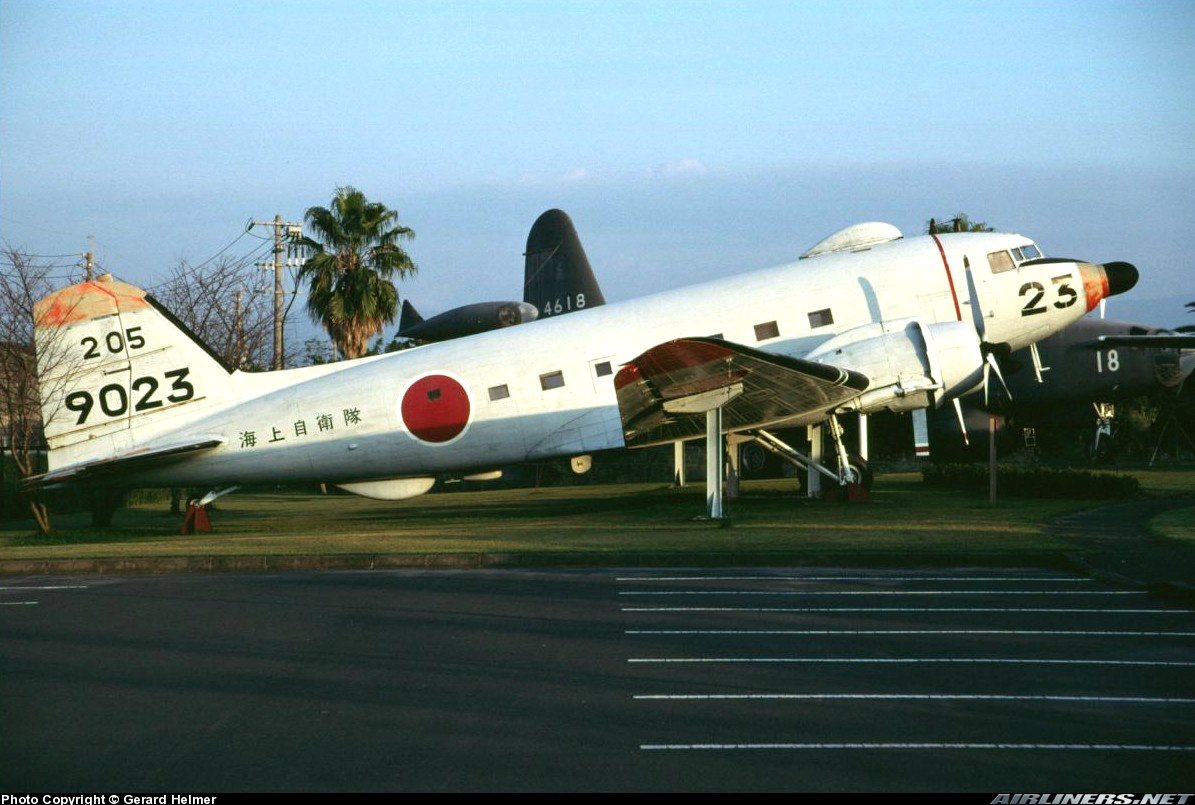The Douglas C-47 Skytrain or Dakota (Part 2)
The Dakota (RAF designation) is a military transport aircraft developed from the civilian Douglas DC-3 airliner. It was used extensively by the Allies during World War II and remained in front line service with various military operators through the 1950s, and into the 1980 and early 1990s in South Africa.During World War II, the armed forces of many countries used the C-47 and modified DC-3s for the transport of troops, cargo, and the wounded. The U.S. Naval designation was R4D. More than 10,000 aircraft were produced in Long Beach and Santa Monica, California and Oklahoma City, Oklahoma. The Oklahoma City plant produced 5,354 C-47s from March 1943 until August 1945.

Operational history
The C-47 was vital to the success of many Allied campaigns, in particular those of D-Day, Guadalcanal and in the jungles of New Guinea and Burma, where the C-47 (and its naval version, the R4D) made it possible for Allied troops to counter the mobility of the light-traveling Japanese army. Additionally, C-47s were used to airlift supplies to the embattled American forces during the Battle of Bastogne. Possibly its most influential role in military aviation, however, was flying "The Hump" from India into China. The expertise gained flying "The Hump" was later be used in the Berlin Airlift, in which the C-47 played a major role, until the aircraft were replaced by Douglas C-54 Skymasters.
In Europe, the C-47 and a specialized paratroop variant, the C-53 Skytrooper, were used in vast numbers in the later stages of the war, particularly to tow gliders and drop paratroops. In the Pacific, with careful use of the island landing strips of the Pacific Ocean, C-47s were even used for ferrying soldiers serving in the Pacific theater back to the United States.

C-47s (about 2,000 received under lend-lease) in British and Commonwealth service took the name Dakota, from the acronym "DACoTA" for Douglas Aircraft Company Transport Aircraft. The C-47 also earned the informal nickname 'Gooney Bird' in the European theater of operations.
Other sources (C-47/R4D Skytrain units of the Pacific and CBI, David Isby, Osprey Combat Aircraft #66, Osprey Publishing Limited, 2007) attribute this name to the first plane, a USMC R2D - the military version of the DC-2 - being the first plane to land on Midway Island, previously home to the native long-winged albatross known as the gooney bird, which was native to Midway.


The Luftwaffe operated captured DC2/3s and C47s. The one pictured above is variously described as a DC2 and 3 by various onloine sources. Apparently the personal aircraft of the German Heer C-in-C in the Netherlands. Will research and do a separate posting! An interesting direction to explore. The Russians also License-built their own variant (more of that later too)
The United States Air Force's Strategic Air Command had Skytrains in service from 1946 through 1967.
With all of the aircraft and pilots having been part of the Indian Air Force prior to independence, both the Indian Air Force and Pakistan Air Force used C-47s to transport supplies to their soldiers fighting in the Indo-Pakistan War of 1947.
Several C-47 variations were used in the Vietnam War by the United States Air Force, including three advanced electronic warfare variations, which sometimes were called "Electric Gooneys" designated EC-47N, EC-47P, or EC-47Qs depending on the engine used.[ EC-47s were also operated by the Vietnamese, Laotian, and Cambodian Air Forces. A gunship variation, using three 7.62 mm miniguns, designated AC-47 "Spooky" often nicknamed "Puff the Magic Dragon" also was deployed.
The Royal Canadian Air Force and later, the Canadian Armed Forces employed the C-47 for transportation, navigation, and radar training, as well as for search and rescue operations from the 1940s to the 1980s.
After World War II, thousands of surplus C-47s were converted to civil airline use, some remaining in operation in 2012, as well as being used as private aircraft.

See Part 3 of my blog for South African Air Force Dakota History (will post it tomorrow)
Large numbers of DC-3s and surplus C-47s were in commercial use in the United States in the 1940s. In response to proposed changes to the airworthiness requirements that would limit the continuing use of the large numbers of DC-3s and surplus C-47s in commercial use in the United States, Douglas offered a late 1940s DC-3 conversion. This was modified to improve takeoff and single-engined performance, to meet the new Civil Air Regulations. The new model, the DC-3S or "Super DC-3", was 39 in (0.99 m) longer. It allowed 30 passengers to be carried, with increased speed to compete with newer airliners. The rearward shift in the center of gravity led to larger tail surfaces and new outer, swept-back wings. More powerful engines were installed along with shorter, jet ejection-type exhaust stacks. These were either 1,475 hp (1,100 kW) Wright R-1820 Cyclones or 1,450 hp (1,081 kW) Pratt & Whitney R-2000s in larger engine nacelles. Minor changes included wheel well doors, a partially retractable tailwheel, flush rivets, and low drag antenna. These all contributed to an increased top speed of 250 mph (400 km/h). With greater than 75% of the original DC-3/C-47 configuration changed, the modified design was virtually a new aircraft.The first DC-3S made its maiden flight on 23 June 1949.
The changes fully met the new FAR 4B airworthiness requirements, with significantly improved performance. However, little interest was expressed by commercial operators in the DC-3S. It was too expensive for the smaller operators which were its main target: only three were sold to Capital Airlines. The U.S. Navy and U.S. Marine Corps had 100 of its R4D aircraft modified to Super DC-3 standards as the R4D-8, later redesignated C-117D.[10]
Variants:
C-47
Initial military version of the DC-3 with seats for 27 troops, 965 built
including 12 to the United States Navy as R4D-1; C-47A; C-47 with a 24-volt electrical system, 5,254 built including USN aircraft designated R4D-5;
RC-47A: C-47A equipped for photographic reconnaissance and ELINT missions
SC-47A: C-47A equipped for Search Air Rescue; redesignated HC-47A in 1962
VC-47A: C-47A equipped for VIP transport role
C-47B:; Powered by R-1830-90 engines with superchargers and extra fuel capacity to cover the China-Burma-India routes, 3,364 built
VC-47B: C-47B equipped for VIP transport role

XC-47C: C-47 tested with Edo Model 78 floats for possible use as a seaplane
C-47D: C-47B with superchargers removed after the war
AC-47D: Gunship aircraft with three side-firing .30 in (7.62 mm) Mini-gun machine guns
EC-47D: C-47D with equipment for the Electronics Calibration, of which 26 were so converted by Hayes in 1953; prior to 1962 was designated AC-47D
NC-47D: C-47D modified for test roles
RC-47D: C-47D equipped for photographic reconnaissance and ELINT missions
SC-47D: C-47D equipped for Search Air Rescue; redesignated HC-47D in 1962
VC-47D: C-47D equipped for VIP transport role
C-47E : Modified cargo variant with space for 27–28 passengers or 18–24 litters
C-47F: YC-129 redesignated, Super DC-3 prototype for evaluation by USAF later passed to USN as XR4D-8
C-47L/M: C-47H/Js equipped for the support of American Legation United States Naval Attache (ALUSNA) and Military Assistance Advisory Group (MAAG) missions
EC-47N/P/: C-47A and D aircraft modified for ELINT/ARDF mission, N and P differ in radio bands covered, while Q replaces analog equipment found on the N and P with a digital suite, redesigned antenna equipment and uprated engines
C-47R: One C-47M modified for high altitude work, specifically for missions in Ecuador
C-47T: Designation applied to aircraft modified to a Basler BT-67 standard

C-47TP: Turbo Dakota; Refit with modern turboprop engines and fuselage stretch for the South African Air Force
C-53 Skytrooper: Troop transport version of the C-47
XC-53A Skytrooper: One aircraft with full-span slotted flaps and hot-air leading edge deicing
C-53B Skytrooper: Winterised version of C-53 with extra fuel capacity and separate navigator's station, eight built
C-53C Skytrooper: C-53 with larger port-side door, 17 built
C-53D Skytrooper; C-53C with 24V DC electrical system, 159 built
C-117A Skytrooper: C-47B with 24-seat airline-type interior for staff transport use, 16 built
VC-117A: Three redesignated C-117s used in the VIP role
SC-117A: One C-117C converted for air-sea rescue
C-117B/VC-117B: High-altitude superchargers removed, one built and conversions from C-117As all later VC-117B
C-117D: USN/USMC R4D-8 redesignated
LC-117D: USN/USMC R4D-8L redesignated
TC-117D: USN/USMC R4D-8T redesignated
VC-117D: USN R4D-8Z redesignated
YC-129: Super DC-3 prototype for evaluation by USAF redesignated C-47F and later passed to USN as XR4D-8. Wright R-1820 engines uprated to 1425 hp.
CC-129: Canadian Forces designation for the C-47 (post-1970)
XCG-17: One C-47 tested as a 40-seat troop glider with engines removed and faired over
R4D-1 Skytrain: USN/USMC version of the C-47
R4D-3: Twenty C-53Cs transferred to USN
R4D-5: C-47A variant 24-volt electrical system replacing the 12-volt of the C-47; redesignated C-47H in 1962, 238 transferred from USAF
R4D-5L: R4D-5 for use in Antarctica. Redesignated LC-47H in 1962. Photos of this type show the removal of underslung engine oil coolers typical of the R-1830 engine installation; apparently not needed in the cold polar regions.
R4D-5Q: R4D-5 for use as special ECM trainer. Redesignated EC-47H in 1962
R4D-5R: R4D-5 for use as a personnel transport for 21 passengers and as a trainer aircraft; redesignated TC-47H in 1962
R4D-5S: R4D-5 for use as a special ASW trainer; redesignated SC-47H in 1962
R4D-5Z: R4D-5 for use as a VIP transport; redesignated VC-47H in 1962
R4D-6: 157 C-47Bs transferred to USN; redesignated C-47J in 1962

R4D-6L, Q, R, S, and Z: Variants as the R4D-5 series; redesignated LC-47J, EC-47J, TC-47J, SC-47J, and VC-47J respectively in 1962
R4D-7: 44 TC-47Bs transferred from USAF for use as a navigational trainer; redesignated TC-47K in 1962

United States Navy R4D-8
R4D-8: R4D-5 and R4D-6 remanufactured aircraft with stretched fuselage, Wright R-1820 engines, fitted with modified wings and redesigned tail surfaces; redesignated C-117D in 1962
R4D-8L: R4D-8 converted for Antarctic use, redesignated LC-117D in 1962
R4D-8T: R4D-8 converted as crew trainers, redesignated TC-117D in 1962
R4D-8Z: R4D-8 converted as a staff transport, redesignated VC-117D in 1962
RAF designation for the C-47 and R4D-1
Dakota II: RAF designation for nine C-53 Skytroopers received under the lend lease scheme. Unlike the majority of RAF Dakotas, these aircraft were therefore dedicated troop transports, lacking the wide cargo doors and reinforced floor of the C-47.
Dakota III: RAF designation for the C-47A.
Dakota IV:RAF designation for the C-47B.
Airspeed AS.61: British conversion of Dakota I aircraft
Airspeed AS.62: British conversion of Dakota II aircraft
Airspeed AS.63: British conversion of Dakota III aircraft
Stats:
Crew: four (Pilot, Co-Pilot, Navigator, Radio Operator)
Capacity: 28 troops
Payload: 6,000 lb (2,700 kg)
Length: 63 ft 9 in (19.43 m)
Wingspan: 95 ft 6 in (29.41 m)
Height: 17 ft 0 in (5.18 m)
Wing area: 987 ft² (91.70 m²)
Dakota wrecks turn up in unusual places:
Siberia
Under water
Empty weight: 18,135 lb (8,226 kg)Loaded weight: 26,000 lb (11,793 kg)
Max. takeoff weight: 31,000 lb (14,061 kg)
Powerplant: 2 × Pratt & Whitney R-1830-90C Twin Wasp 14-cylinder radial engines, 1,200 hp (895 kW) each
Performance
Maximum speed: 224 mph (195 kn, 360 km/h) at 10,000 ft (3,050 m)
Cruise speed: 160 mph (139 kn, 257 km/h)
Range: 1,600 mi (1,391 nmi, 2,575 km)
Ferry range: 3,600 mi (3,130 nmi, 5,795 km)
Service ceiling: 26,400 ft (8,045 m)
Climb to 10,000 ft (3,050 m): 9.5 min







I believe that picture of a Luftwaffe example is a DC-2, not a DC-3.
ReplyDeleteThanks, could well be. Shows you how reliable using the internet as a source is ! Will have to research the history more
DeleteAppears that more than one aircraft was captured by the Germans
DeleteFound some great info: http://www.pprune.org/archive/index.php/t-169824.html will post on Russian Variants, and on the Axis Dc2s and 3s too!
http://www.fleetairarmarchive.net/aircraft/Dakota.htm
http://flyawaysimulation.com/downloads/files/16588/fs2004-lufthansa-douglas-dc-3-d-arpf/
http://www.scalemates.com/products/product.php?id=138158